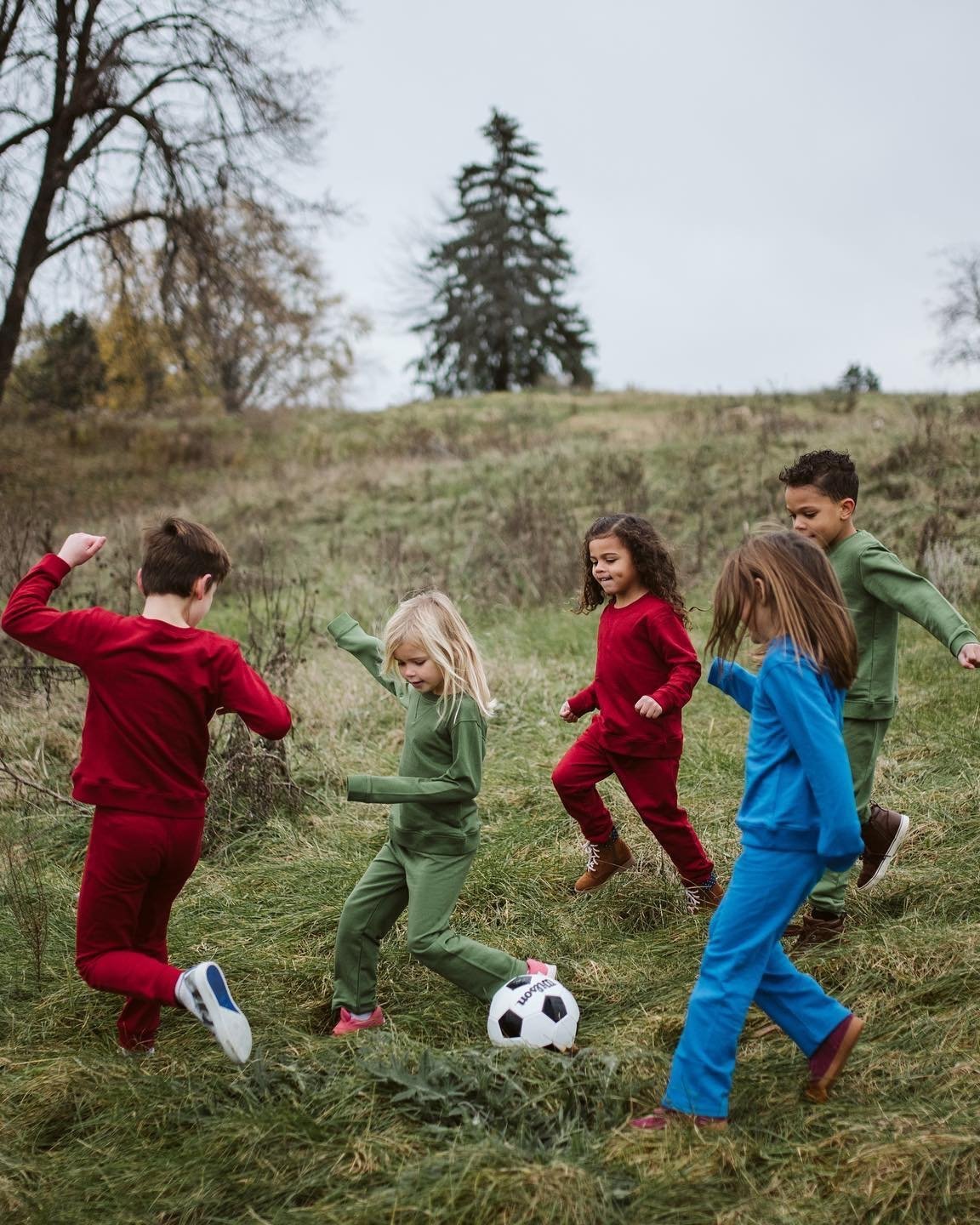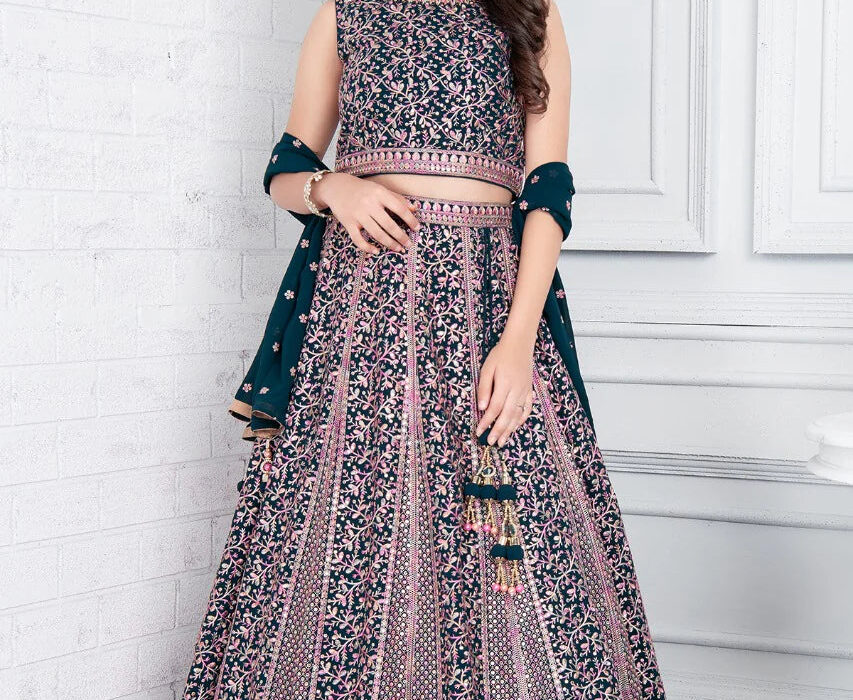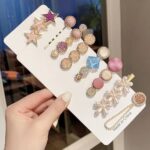Yes, kids’ fashion can be both eco-friendly and stylish. Many brands now focus on sustainable materials without sacrificing design.
Parents increasingly seek fashion that reflects their values. Eco-friendly kids’ clothing uses organic fabrics, recycled materials, and ethical production methods. Stylish options abound, from vibrant colors to trendy designs that appeal to children and parents alike. Sustainable fashion encourages creativity while teaching kids about environmental responsibility.
As awareness grows, many brands are stepping up, offering collections that blend aesthetics with sustainability. By choosing eco-friendly clothing, families can make a positive impact on the planet while keeping their kids fashionable. Embracing this trend not only benefits the environment but also inspires the next generation to appreciate style and sustainability.
Table of Contents
The Rise Of Eco-friendly Kids’ Fashion
Eco-friendly kids’ fashion is gaining popularity. Parents want stylish clothes that are also good for the planet. This trend reflects a growing awareness about sustainability. More brands are creating eco-friendly options for children.
Environmental Impact Of Traditional Clothing
Traditional clothing has a significant impact on the environment. The production process contributes to pollution and waste. Here are some key issues:
- High water usage in cotton farming.
- Use of toxic dyes and chemicals.
- Fast fashion leads to increased textile waste.
- Carbon emissions from manufacturing and transportation.
These factors harm our planet. Eco-friendly fashion aims to reduce these negative effects. It promotes sustainable materials and practices. Parents are becoming more aware of these issues.
Shift In Consumer Consciousness
Consumers are changing how they view fashion. Many now prioritize sustainability. They want clothes that are stylish and eco-friendly.
Some factors driving this shift include:
- Increased awareness of environmental issues.
- Desire for healthier options for children.
- Influence of social media promoting eco-friendly brands.
Parents are looking for brands that align with their values. They seek transparency in production processes. This change benefits both kids and the environment.
| Eco-Friendly Materials | Benefits |
|---|---|
| Organic Cotton | Grows without harmful chemicals. |
| Bamboo | Fast-growing and biodegradable. |
| Recycled Polyester | Reduces waste and energy use. |
Eco-friendly kids’ fashion is stylish and responsible. It empowers parents to make better choices. Kids can express themselves without harming the environment.
Defining Eco-fashion For The Younger Generation
Eco-fashion for kids combines style and sustainability. It focuses on using materials and practices that protect the planet. Parents want their children to look good and feel good about their choices. Eco-fashion meets these needs. It teaches kids the value of caring for the environment.
Sustainable Materials And Production
Sustainable materials are key in eco-fashion. They come from sources that do not harm the Earth. Here are some common sustainable materials:
- Organic Cotton: Grown without harmful chemicals.
- Recycled Fabrics: Made from old clothes or materials.
- Bamboo: Fast-growing and requires little water.
- Hemp: Durable and grows in poor soil.
Production methods also matter. Brands use eco-friendly processes to make clothing. This reduces waste and pollution. For example:
| Production Method | Description |
|---|---|
| Low Impact Dyes | Use less water and fewer chemicals. |
| Local Manufacturing | Reduces transportation emissions. |
| Zero Waste Patterns | Minimizes fabric scraps during cutting. |
Ethical Labor Practices
Ethical labor practices ensure fair treatment of workers. Kids’ fashion brands should support workers’ rights. This includes fair wages and safe working conditions. Here are some key aspects:
- Fair Pay: Workers earn a living wage.
- No Child Labor: Children must not work in factories.
- Safe Environments: Workplaces should be safe and healthy.
- Community Support: Brands help local communities thrive.
Choosing brands with ethical practices teaches kids compassion. They learn that their choices impact others. Eco-fashion is stylish and responsible. Every purchase can make a difference.
Style Meets Sustainability
Kids’ fashion can be both eco-friendly and stylish. Parents want their children to look great while being kind to the planet. Eco-friendly clothing supports our environment. Stylish outfits can help kids express their unique personalities. Let’s explore how these two important aspects blend together.
Breaking The Eco-fashion Stereotypes
Many believe eco-fashion lacks style. This idea is changing fast. Brands now create trendy clothing using sustainable materials.
- Organic cotton: Soft, safe, and chemical-free.
- Bamboo fabric: Naturally antibacterial and biodegradable.
- Recycled polyester: Made from plastic bottles, reducing waste.
These materials look great and feel comfortable. Kids can run, jump, and play in them without worry. More brands promote eco-friendly styles. They offer vibrant colors and fun designs.
Design Innovation In Kids’ Clothing
Designers are embracing creativity in eco-fashion. They use innovative techniques to create stylish pieces.
| Design Feature | Description |
|---|---|
| Versatile Styles | Clothes that grow with your child. |
| Mix-and-Match | Easy to combine different pieces. |
| Gender-Neutral | Clothing suitable for all kids. |
These innovations keep kids looking fresh. They allow freedom of movement. Plus, kids can express themselves through their outfits.
Eco-friendly fashion helps build a better future. Choosing stylish and sustainable clothing is a win-win for everyone.

Credit: www.sustainably-chic.com
Materials Matter: Fabrics That Care
Choosing the right materials is crucial for eco-friendly kids’ fashion. The fabrics used can greatly impact the environment. Parents want stylish options that are also sustainable. Let’s explore some popular eco-friendly fabrics.
Organic Cotton Versus Conventional Cotton
Organic cotton is grown without harmful pesticides. It is better for the planet and for kids’ skin. Conventional cotton uses many chemicals, which can be harmful. Here’s a quick comparison:
| Feature | Organic Cotton | Conventional Cotton |
|---|---|---|
| Pesticides | None | High usage |
| Water Usage | Less | More |
| Impact on Farmers | Healthier | Risky |
Choosing organic cotton supports sustainable farming. It protects the environment and promotes health.
Recycled And Upcycled Textiles
Recycled textiles come from old clothing or materials. They reduce waste and save resources. Upcycled fabrics are made by creatively reusing old items. This can include:
- Old t-shirts turned into bags
- Faded jeans made into shorts
- Worn-out sweaters transformed into cozy hats
Using recycled and upcycled textiles helps keep the planet clean. Kids can wear unique styles while being eco-friendly.
The Lifecycle Of Eco-friendly Kids’ Clothes
Eco-friendly kids’ clothes offer more than just style. They promote sustainability and reduce waste. Understanding their lifecycle helps parents make better choices.
Durability And Longevity
Durable materials are key to eco-friendly kids’ fashion. Strong fabrics withstand wear and tear. This means clothes last longer.
- Organic cotton
- Bamboo fibers
- Recycled polyester
Choosing these materials benefits both the environment and your wallet. Less frequent replacements save money. Durable clothes also reduce waste in landfills.
Recycling And Upcycling Post-use
What happens when kids outgrow their clothes? Recycling and upcycling provide great solutions. They keep items out of landfills and give them new life.
- Recycling: Old clothes can be transformed into new products.
- Upcycling: Creative projects turn outgrown garments into something useful.
Consider these options for post-use:
- Donate to local charities.
- Organize clothing swaps with friends.
- Transform clothes into rags or art projects.
These choices promote a circular economy. Kids’ clothes can live on, even after they’re outgrown.

Credit: milimilu.com
Brands Leading The Green Fashion Revolution
Eco-friendly kids’ fashion is gaining momentum. Many brands are proving that style and sustainability can coexist. These brands focus on using organic materials and ethical practices. They aim to create a better future for our planet.
Pioneers In Sustainable Kids’ Apparel
Some brands have set the standard in eco-friendly fashion. They prioritize sustainability while ensuring fun designs. Here are a few leading names:
- Mini Rodini: Known for its playful prints and organic fabrics.
- Frugi: Offers vibrant, sustainable clothing made from organic cotton.
- Kate Quinn: Focuses on soft, eco-friendly fabrics for babies and toddlers.
- Tentree: Plants ten trees for every item sold, promoting reforestation.
| Brand | Focus | Unique Selling Point |
|---|---|---|
| Mini Rodini | Playful Designs | Organic and recycled materials |
| Frugi | Vibrant Colors | Fair Trade practices |
| Kate Quinn | Soft Fabrics | Stylish and eco-conscious |
| Tentree | Reforestation | Ten trees planted per purchase |
Small Businesses Making A Big Impact
Small businesses also contribute significantly to eco-friendly kids’ fashion. They focus on unique designs and sustainable practices. Here are a few noteworthy small brands:
- Little Green Radicals: Uses fair trade practices and organic materials.
- Purebaby: Specializes in organic cotton clothing for babies.
- Hanna Andersson: Offers long-lasting, sustainable clothing for kids.
These small businesses prove that every effort counts. They inspire families to choose eco-friendly options. Stylish kids’ clothing can be both trendy and kind to the planet.
Balancing Cost With Eco-conscious Choices
Finding stylish kids’ fashion that is also eco-friendly can be tricky. Parents often face the challenge of ensuring their kids look good while being kind to the planet. One major factor in this balance is cost. Understanding how to manage this can lead to smart purchasing decisions.
The Price Tag Of Sustainability
Eco-friendly clothing often comes with a higher price tag. Here are some reasons why:
- Quality Materials: Sustainable fabrics cost more to produce.
- Ethical Production: Fair wages for workers add to expenses.
- Limited Production: Smaller runs mean less mass production savings.
Parents may hesitate to spend more on eco-friendly items. However, consider the long-term benefits. High-quality clothes last longer. This means fewer replacements. Investing in sustainable fashion can save money over time.
Budget-friendly Green Fashion Options
Finding eco-conscious choices that fit your budget is possible. Here are some tips:
- Buy Second-Hand: Thrift stores offer stylish options at lower prices.
- Swap Clothes: Organize a clothing swap with friends or family.
- Sales and Discounts: Look for sales on eco-friendly brands.
- DIY Fashion: Upcycle old clothes into something new and exciting.
Many brands focus on affordability without sacrificing sustainability. Here’s a table of budget-friendly green fashion brands:
| Brand Name | Price Range | Style Focus |
|---|---|---|
| H&M Conscious | $$ | Trendy basics |
| Patagonia | $$$ | Outdoor wear |
| Zara Join Life | $$ | Fashion-forward pieces |
| Mini Rodini | $$$ | Playful designs |
Balancing cost with eco-conscious choices is achievable. With smart shopping, kids can wear stylish and sustainable fashion.
The Role Of Certifications And Labels
Certifications and labels play a key part in eco-friendly kids’ fashion. They help parents make informed choices. These labels ensure that clothing is both stylish and sustainable. Understanding what these certifications mean is essential for eco-conscious shoppers.
Understanding Eco-friendly Certifications
Eco-friendly certifications provide a clear picture of a product’s environmental impact. Here are some common certifications:
- Global Organic Textile Standard (GOTS): Ensures organic fibers and fair labor practices.
- OEKO-TEX® Standard 100: Certifies that textiles are free from harmful substances.
- Fair Trade: Focuses on fair wages and safe working conditions.
- Cradle to Cradle: Evaluates the entire lifecycle of a product.
These certifications help parents choose safe and sustainable clothing options.
The Importance Of Transparency In Labeling
Transparency in labeling builds trust with consumers. Labels should clearly state:
- Material origins
- Production methods
- Environmental impact
Clear labels help parents understand what they buy. This knowledge empowers parents to choose eco-friendly options. Brands must commit to honest communication. Transparency ensures that kids’ fashion can be both stylish and sustainable.
Influencing The Industry Through Consumer Demand
Kids’ fashion is evolving. Parents and children want clothes that are both stylish and eco-friendly. The shift in consumer demand is changing how brands create clothing. They now focus on sustainability and design.
The Power Of The Purse
Parents hold the key to change. Their buying choices influence the entire industry. When parents choose eco-friendly brands, they send a clear message. This demand pushes companies to rethink their practices.
- Purchasing eco-friendly products supports sustainable practices.
- More sales for green brands lead to broader options.
- Children’s voices matter. Kids can influence their parents’ choices.
Brands notice these trends. They want to attract eco-conscious families. This creates a win-win situation for everyone involved.
Encouraging Brands To Go Green
Consumer demand encourages brands to adopt green practices. Companies feel the pressure to change. They must offer sustainable options.
| Brand | Eco-Friendly Initiative |
|---|---|
| Brand A | Uses organic cotton in all clothing lines |
| Brand B | Recycles plastic bottles into fabric |
| Brand C | Partners with local artisans for sustainable production |
Parents can help encourage more brands to go green. Supporting eco-friendly brands can lead to positive changes. Every purchase makes a difference. Together, consumers can inspire a sustainable future for kids’ fashion.

Credit: westuniversitymoms.com
Educating The Next Generation On Sustainable Fashion
Teaching kids about sustainable fashion is vital. They can learn to make eco-friendly choices. Understanding fashion’s impact helps shape their future. Kids can become responsible consumers.
Starting early encourages them to think about the planet. Eco-friendly habits can be fun and engaging. Here are some ways to integrate these lessons into their lives.
Incorporating Eco-friendliness Into Kids’ Lives
- Choose Sustainable Brands: Look for companies that prioritize eco-friendly materials.
- Thrift Shopping: Teach kids the value of second-hand clothing.
- DIY Projects: Encourage creativity by upcycling old clothes.
- Nature Walks: Connect fashion choices with environmental awareness.
Making these activities enjoyable fosters a love for sustainability. Kids can learn to appreciate quality over quantity. Fashion can be fun while being kind to the Earth.
Tools For Parents To Teach Sustainability
| Tool | Purpose |
|---|---|
| Books | Introduce concepts of sustainability in an engaging way. |
| Workshops | Provide hands-on learning experiences about eco-friendly practices. |
| Documentaries | Show the impact of fast fashion on the environment. |
| Games | Make learning about sustainability interactive and fun. |
Using these tools promotes understanding. Kids can grasp the importance of making sustainable choices. Engaging them early helps build a better future.
The Aesthetics Of Eco-friendly Fashion
Eco-friendly fashion is not just about being green. It’s also about style. Kids can wear clothes that look great and help the planet. Bright colors and fun patterns make eco-friendly clothes exciting. Parents can feel good about their kids’ fashion choices.
Color And Pattern Trends In Green Clothing
Colors and patterns play a big role in eco-fashion. Here are some popular trends:
- Earthy Tones: Browns, greens, and blues connect with nature.
- Bold Patterns: Fun prints like animals or flowers catch attention.
- Pastel Shades: Soft colors are perfect for spring and summer.
These colors and patterns show that eco-friendly clothing can be stylish. Kids love to express themselves through vibrant designs.
Eco-fashion As A Form Of Expression
Eco-fashion allows kids to express their unique personalities. Here’s how:
- Creative Styles: Mixing and matching eco-friendly pieces is fun.
- Personal Messages: Some brands have messages about saving the planet.
- DIY Options: Kids can customize their clothes with patches or paint.
Eco-friendly fashion encourages creativity. Kids learn to care for the environment while looking great.
The Future Of Kids’ Fashion
The future of kids’ fashion holds exciting possibilities. Parents want stylish clothes that are also eco-friendly. Brands must adapt to these new demands. They need to create clothes that are fun and sustainable. This shift will shape how kids dress in the coming years.
Innovations On The Horizon
New technologies are changing how kids’ fashion is made. Designers focus on reducing waste and using sustainable materials. Here are some innovations to watch:
- 3D Printing: This technology creates clothes on demand. It reduces fabric waste.
- Recycled Fabrics: Brands are using old clothes to make new ones. This helps keep waste out of landfills.
- Biodegradable Materials: Some fabrics break down easily. This is better for the environment.
Predicting The Next Big Sustainable Materials
Many new materials are emerging in kids’ fashion. These materials are both trendy and eco-friendly. Here’s a table of potential future materials:
| Material | Benefits |
|---|---|
| Organic Cotton | Grown without harmful chemicals. |
| Bamboo Fabric | Soft, breathable, and fast-growing. |
| Hemp | Strong and requires little water. |
| Recycled Polyester | Made from plastic bottles, reduces waste. |
Fashion brands are eager to explore these options. They want to create clothing that kids love. Stylish and eco-friendly choices are the key to a bright future.
Case Studies: Success Stories In Eco-friendly Kids’ Fashion
Eco-friendly kids’ fashion is gaining momentum. Many brands show that style and sustainability can coexist. Here are some inspiring examples and trends that highlight this shift.
Brands That Have Made A Difference
Several brands lead the way in eco-friendly kids’ fashion. They focus on sustainable materials and ethical practices. Here are a few standout names:
- Mini Rodini: This Swedish brand uses organic cotton and recycled materials. Their playful designs appeal to kids and parents.
- Frugi: Based in the UK, Frugi creates vibrant clothes from organic cotton. They promote fair trade and environmental awareness.
- H&M Conscious Collection: H&M’s line uses recycled materials and eco-friendly processes. They aim for affordable sustainable fashion.
These brands demonstrate that kids’ clothes can be both stylish and eco-friendly. They inspire families to choose sustainable options without sacrificing style.
Consumer Shifts That Shaped The Market
Consumer preferences are changing. More parents prioritize eco-friendly choices for their children. This shift is shaping the market in several ways:
- Awareness: Parents are more informed about fashion’s environmental impact.
- Demand for Transparency: Brands must show their sustainable practices.
- Preference for Quality: Families prefer durable clothes over fast fashion.
These trends show a strong desire for sustainability. Consumers are driving brands to innovate and improve. This leads to a brighter future for kids’ fashion.
Frequently Asked Questions
Can Eco-friendly Kids’ Fashion Be Stylish?
Yes, eco-friendly kids’ fashion can be trendy, featuring vibrant colors and unique designs while being sustainable.
What Materials Are Used In Eco-friendly Kids’ Clothing?
Organic cotton, bamboo, and recycled fabrics are popular choices for creating eco-friendly kids’ clothing.
Why Choose Eco-friendly Fashion For Kids?
Choosing eco-friendly fashion helps reduce environmental impact and promotes sustainable practices for future generations.
Where Can I Find Stylish Eco-friendly Kids’ Clothes?
Many brands specialize in eco-friendly kids’ fashion, available online and in select retail stores.
Conclusion
Kids’ fashion can indeed blend eco-friendliness with style. Parents can choose sustainable materials and ethical brands. This approach not only supports the environment but also sets a positive example for children. Embracing eco-friendly fashion helps cultivate a generation that values both style and sustainability.
Together, we can make a difference.







